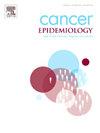Survival analysis in adult Burkitt Lymphoma in Colombia according to HIV status
IF 2.3
3区 医学
Q3 ONCOLOGY
引用次数: 0
Abstract
Introduction
Burkitt lymphoma is a highly aggressive Non-Hodgkin Lymphoma, is considered a rare tumor, accounts for only 1–2 % of adult lymphomas in North America. The two-year Overall survival rates was reported between 67 % and 84 %. Statistics from developing countries comes mainly from children studies in Africa where Burkitt Lymphoma is endemic. In Latin American countries, information about survival in adult population is scarce with limited number of patients and poor survival outcomes mainly in HIV associated Burkitt Lymphoma. The aim of this study is to evaluate survival in adults’ patients with BL, and HIV status in a Colombian cohort.
Materials and methods
A retrospective cohort study was conducted to determine the demographic characteristics, treatment, and survival of adult Burkitt Lymphoma patients in Colombia. The study included adult patients diagnosed with Burkitt Lymphoma between 2004 and 2023, and calculate Overall survival and progression free survival of the population, and according to HIV status
Results
83 patients were included for analysis with 49 (59 %) patients with a sporadic variant and 34 (41 %) with an immunodeficiency-associated variant. The median age at diagnosis was 40 years, IQR (30 – 52), The 36-months OS was 49.9 % (95 % CI; 39.6 – 62.9 %)), and 36-months PFS was 51.5 % (95 % CI¸41.5 – 64.5). For HIV patients 36-months OS was 41 % (95 % CI; 26.7 – 62.7 %) and 59.2 % (95 % CI; 45.8 – 76.6 %) HIV negative HR 1.72 (95 % CI; 0.93 – 1.19 (p = 0.08).
Conclusion
this study suggests an OS survival inferior than reported for developed countries with inferior survival rates in HIV patients
哥伦比亚成人伯基特淋巴瘤HIV感染状况的生存分析
伯基特淋巴瘤是一种高度侵袭性的非霍奇金淋巴瘤,被认为是一种罕见的肿瘤,在北美仅占成人淋巴瘤的1-2 %。两年总生存率在67 %和84 %之间。发展中国家的统计数据主要来自伯基特淋巴瘤流行的非洲儿童研究。在拉丁美洲国家,成年人的生存信息很少,患者数量有限,主要是HIV相关的伯基特淋巴瘤的生存结果较差。本研究的目的是评估哥伦比亚队列中成年BL患者的生存率和HIV状态。资料与方法回顾性队列研究旨在确定哥伦比亚成人伯基特淋巴瘤患者的人口学特征、治疗和生存率。该研究纳入了2004年至2023年间诊断为伯基特淋巴瘤的成年患者,并计算了人群的总生存期和无进展生存期,根据HIV状态,83例患者被纳入分析,其中49例(59 %)患者为散发变异,34例(41 %)患者为免疫缺陷相关变异。诊断时中位年龄40岁,IQR(30 - 52), 36个月OS为49.9 %(95 % CI;39.6 - 62.9 %)),36个月PFS是51.5 %(95 % CI¸41.5 - 64.5)。对于HIV患者,36个月的OS为41% %(95% % CI;26.7 - 62.7 %)和59.2 %(95% % CI;45.8 - 76.6 %)HIV阴性HR 1.72(95% % CI;0.93 - 1.19 (p = 0.08)。结论:本研究提示HIV患者的OS生存率低于发达国家报道的生存率
本文章由计算机程序翻译,如有差异,请以英文原文为准。
求助全文
约1分钟内获得全文
求助全文
来源期刊

Cancer Epidemiology
医学-肿瘤学
CiteScore
4.50
自引率
3.80%
发文量
200
审稿时长
39 days
期刊介绍:
Cancer Epidemiology is dedicated to increasing understanding about cancer causes, prevention and control. The scope of the journal embraces all aspects of cancer epidemiology including:
• Descriptive epidemiology
• Studies of risk factors for disease initiation, development and prognosis
• Screening and early detection
• Prevention and control
• Methodological issues
The journal publishes original research articles (full length and short reports), systematic reviews and meta-analyses, editorials, commentaries and letters to the editor commenting on previously published research.
 求助内容:
求助内容: 应助结果提醒方式:
应助结果提醒方式:


